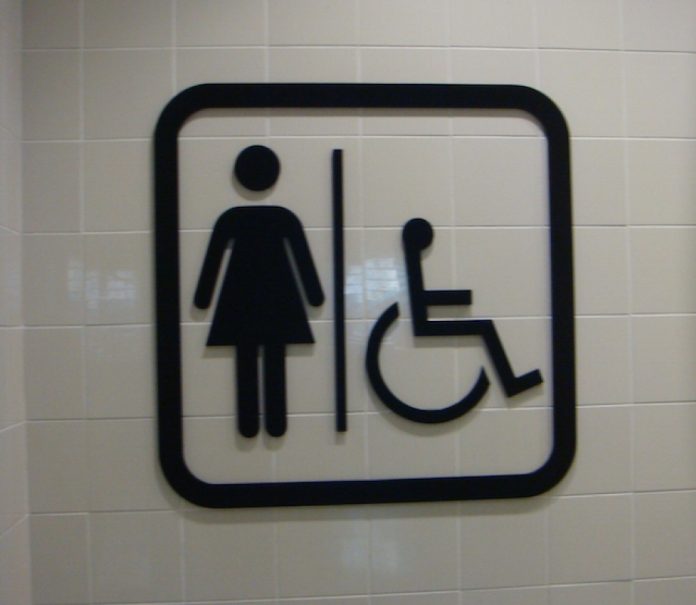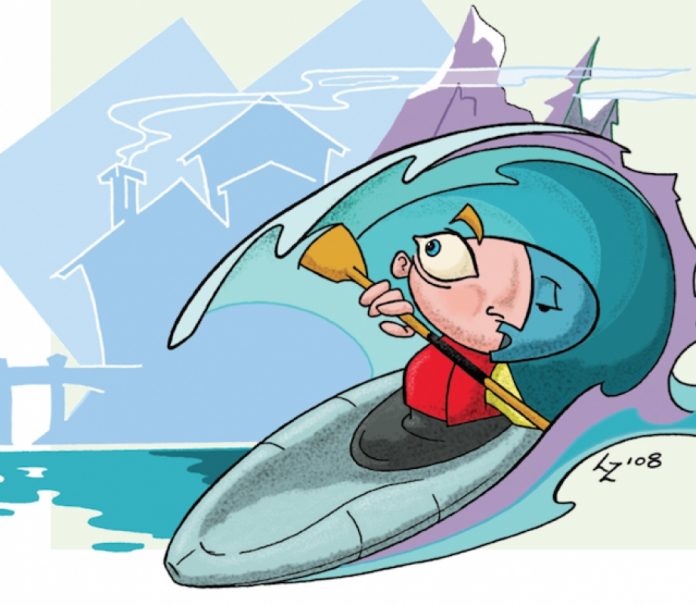When Bruce Lash started kayaking in 1983, he never imagined one day leading a group of paddlers across 12 kilometres of open water on lake Superior in November. The self-proclaimed “ordinary paddler” and firefighter from Sault Ste. Marie, Ontario, first became interested in sea kayaking as a means to better duck hunting. Less than a decade later, he was paddling with top kayakers, the likes of Derek Hutchinson and Valley Canoe Products designer Frank Goodman, and had started the first sea kayak company on lake Superior. lash became part of sea kayaking’s highest order in 1995 when Nigel Dennis, a British Canoe Union (BCU) coach and legendary expedition paddler, signed his 5-Star Sea Award.
Lash says his 5-Star assessment included everything the Holy Grail of sea kayaking is known for: rough water landings, broken boats and night navigation. Early on in the crossing portion, a paddler panicked and had to be towed for most of the way. Then, Dennis flooded someone else’s bow hatch—camping gear and all—and left lash to pick up the pieces. All the while and ever deadpan, Dennis watched on from a distance.
“It was like a rite of passage,” says lash. “I’ve never been so intimidated in my whole life. But there was a certain comfort in knowing that the assessor put you in those situations knowing that you had the tools to get out of them safely. And because I went in ready for the worst, it was achievable. But it felt really, really good when it was over.”
Despite its iconic status, the BCU wasn’t the first national governing body of paddle- sports. The American Canoe Association (ACA) started up in 1880, long before 1936 Olympic hopefuls created a union of English paddlers. But sea kayaking was barely known in North America when the sport’s highest standards were set by BCU grandfathers and whitewater paddlers Hutchinson, Tom Caskey, Sam Cook, and John
Ramwell in the 1960s.
BCU programs are divided into training and assessment stages. Since the beginning, the goal of the BCU’s top sea kayaking award has been to train and assess expedition paddlers for their ability to lead groups in advanced sea conditions.
In north America meanwhile, where sea kayaking blossomed without for- mal instruction, the ACA’s only sea kayaking offering by the 1980s was a course that corresponded with the bottom rung of the BCU’s five-step ladder, says Dave ide, who began paddling in Traverse City, Michigan, in 1983. “All the ACA had were beginner-level courses. The British were doing things like kayaking around Cape Horn and Nigel [Dennis] had kayaked around all of the British Isles. They were very into the adventure aspect and the rougher ocean, and had an instruction program to back it up.”
The British invasion began when Czech ex-pat and former whitewater slalom world champion Stan Chladek began importing British-built sea kayaks to his Detroit paddling shop in the late 1970s and BCU instructors to his Great lakes Sea Kayak Symposium in the mid-1980s. Ide says that Britons Hutchinson, Goodman and Howard Jeffs were recruited by Chladek to oversee the ACA program. But it quickly became obvious that the British system of instruction was more refined, and BCU North America became its own entity.
Ide, a long-time AT&T telephone employee who still lives on the shore of lake Michigan, admits to having an addictive personality. As quickly as he became hooked on sea kayaking, he also became one of North America’s highest-ranking paddlers. He surfed his 18-foot Nordkapp with Goodman, Dennis and lash at Chladek’s Gales of November rendezvous on lake Superior’s Canadian shore, explored Vancouver island’s gale-battered Brooks Peninsula and paddled the violent tide races of the British isles. He achieved his first BCU instructor award in 1990.
After taking Advanced Proficiency Sea (now 5-Star Sea) training on lake Michigan, ide joined the 5-Star fraternity in 1993 when he led a group of paddlers, including assessor Dennis, in fog and five-metre seas on the boomer-ridden coast of Maine. “I was the only one with a chart and to get back to shore we had to follow a particular path around a bunch of is- lands,” says ide. “When we made it in safely, Nigel said he’d be happy to sign my endorsement.”
The Advanced Proficiency curriculum was about “stretching the boundaries of your skill level,” says ide. Still, it was doable. Ide says that then—as is still the case with the 5- Star today—candidates were told the skills and knowledge they were expected to demonstrate well before being assessed.
“Some of the skills sounded intimidating—like throwing away your paddle and rolling up with a spare in breaking waves,” he says. “But practiced, and by the time the assessment came around I could do it without fail. The hardest parts were the leadership and navigation aspects. You never knew what they were going to throw at you.”
In 1994, Ide became a senior instructor and, along with New York’s Bill Lozano, was handed the unenviable task of administering the BCU in North America—while the tea-sipping grandfathers watched on from across the pond. When Ide sanctioned Lash’s 5-Star Sea assessment on Lake Superior, the old guard balked. “It never really flew with the people in Britain that we could have an endorsement that was non-tidal,” says Ide.
Sam Crowley, an Ide-trained sea kayak instructor from Marquette, Michigan, says there were complicated politics involved: “The BCU has always had this thing where some have aspired to go global and others have wanted to stick to England. In the late-1990s, the ‘stick to England’ camp won.”
The BCU withdrew high-level instruction in North America for a time. As the BCU’s influence here waned, homegrown American and Canadian paddlesports programs flourished. Both the ACA and Canada’s national paddlesports organization, Paddle Canada, developed beginner to expert programs with skills and instructor streams that parallel the BCU hierarchy. Yet interestingly—whether out of deference to the legendary status of the BCU’s top honour or just poor marketing—both labelled their top award a level 4. Both level fours have yet to equal the 5-Star’s prestige.
Back in England, the BCU remained the domain of some of the world’s best sea kayakers. Today the BCU torch burns brighter than ever in the hands of a fresh, younger generation of expedition paddlers and ocean playboaters like Jeff Allen.
To understand the BCU program, says Allen, an instructor, expedition paddler and owner of Sea Kayaking Cornwall, you have to realize that its awards are based on the sea conditions of Great Britain’s North Atlantic coast.
“The biggest problem with the running of 5-Star assessments in the U.S. is the lack of strong tidal flow,” says Allen. “It’s not that the U.S. doesn’t have 5-Star conditions. But the strong tides [of the British Isles] are intrinsic to the BCU 5-Star Sea award.”
Allen, who has sea kayaked around Japan and Antarctica’s South Georgia Island, admits to having never heard of the BCU when he started paddling in the mid-1990s. “At first I thought what a mess—levels, stars, A grades—and assessors and coaches griping at the system,” he says. “There may be a certain amount of British bull, but I quickly realized that the core of the system is as strong as it gets.”
After several 5-Star dry runs in Welsh overfalls as a “crash test dummy,” Allen found himself under the leadership microscope in 2003, taking a group across the Straits of Gibraltar. The typically three- to four- hour crossing from Spain to Morocco turned into a nine-hour suffer-fest, with Allen and assessor Fiona Whitehead both towing other participants in buffeting winds.
“Because I prepared religiously, I can’t say that it was a challenge,” says Allen. “In my training I worked through the what-ifs, looked for answers and developed strategies.”
Unlike the early days, female paddlers have played an increasingly important role in today’s BCU—and are instrumental in bringing the resurgence of the BCU’s North American influence. Since Trys Burke became the first woman to achieve the coveted Level 5 Coach award and was certified to assess 5- Star candidates in 1998, Fiona White- head and American Jen Kleck have also become top-ranked coaches.
Inspired and intimidated by the 5- Star Sea’s reputation, Ginni Callahan, a sea kayak guide and instructor who splits her time between Washington’s Puget Sound and Baja, Mexico, challenged the award in 2005. She did her assessment in Wales under the auspices of Nigel Dennis, Rowland Woollven and Fiona Whitehead, in the powerful, unfamiliar tidal races of Holy Island.
“It was my first time paddling in England and behind it all there was this sense of the impossible,” says Callahan. “On the whole, sea kayakers in England don’t paddle in the same type of conditions that we paddle in here on the Pacific. The tide races are so dynamic. It’s true that the sea conditions over there are un- like anything in the U.S.”
Callahan says British-trained sea kayakers seem to have a fondness for hardship and an affinity for disaster. “I went over and practiced for a few weeks before my assessment and helped out as a rescue boater at Nigel’s symposium,” she says. “The symposium was a real eye-opener. Participants could choose between three streams of instruction: Playing in the tide races, rescues and incident management, or taking out Nigel’s old beater kayaks for a crash and bash. In the end, all three groups seemed to blend into one. It sounds crazy—and it was—but it really got me thinking on my toes.”
When it came time for her assessment, Callahan says the biggest challenge was the night navigation. She was responsible for leading the group on a set route in pitch darkness. As she completed the last leg, the single streetlight she was using as a target was missing and she was reduced to hoping for the best.
“When we got close to the beach and the light was gone, I was certain I’d screwed up,” says Callahan. “All the while, the rest of the group and the assessors were just watching me sweat it out. But it turns out I was right on. The light had been turned out for the night.”
Ten years after Dave Ide’s reign, instructors like Ginni Callahan, Jen Kleck, Leon Sommé and Shawna Franklin have re-established the BCU in North America. Sea Kayak Georgia and Florida’s Sweetwater Kayaks in- vite some of England’s finest instructors for their annual BCU weeks. And on the West Coast, Kleck runs 5-Star training courses and is planning a 5- Star assessment in the tide races of San Francisco Bay.
Callahan says the award’s “Holy Grail” reputation is only half right: “The assessment isn’t about trying to trip you up, it’s about getting you to lead. It’s accessible for those who’ve done their homework and have the leadership knack. Still, the award is real in the sense that it actually means something.”
Conor Mihell is a freelance writer and kayak guide based on Lake Superior. He holds the BCU 4-Star Sea award and is a Paddle Canada Instructor-Trainer (conormihell.com).
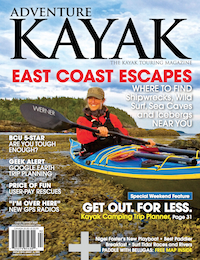 This article first appeared in the Early Summer 2009 issue of Adventure Kayak Magazine. For more great content, subscribe to Adventure Kayak’s print and digital editions here.
This article first appeared in the Early Summer 2009 issue of Adventure Kayak Magazine. For more great content, subscribe to Adventure Kayak’s print and digital editions here.
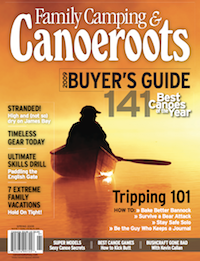



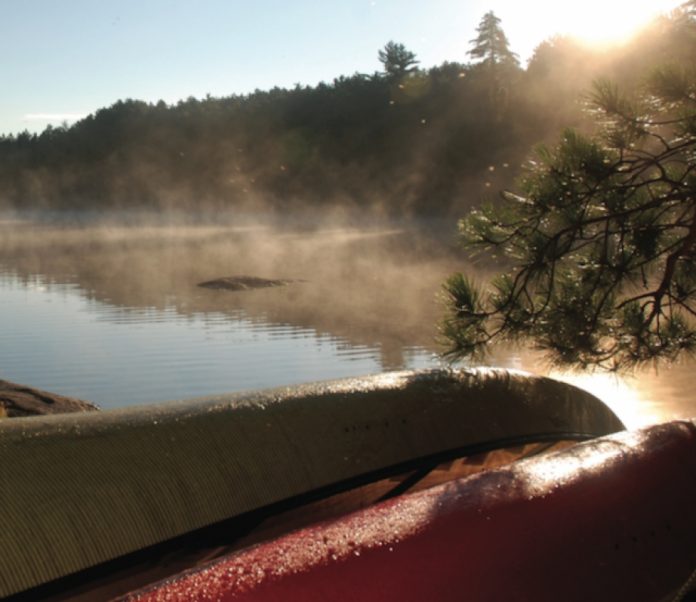
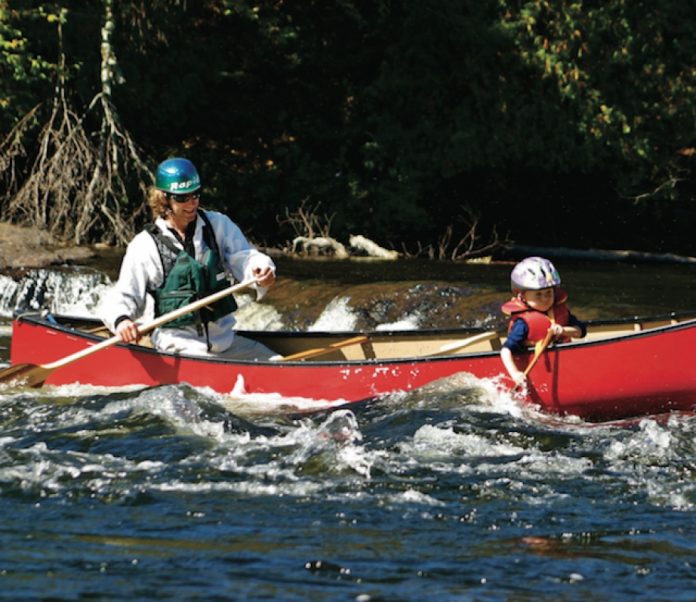
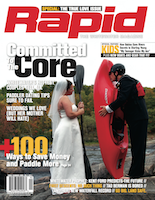

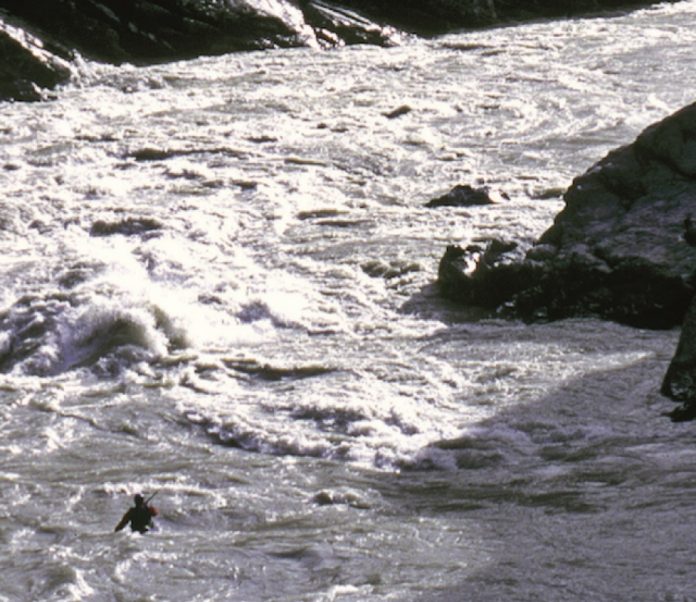
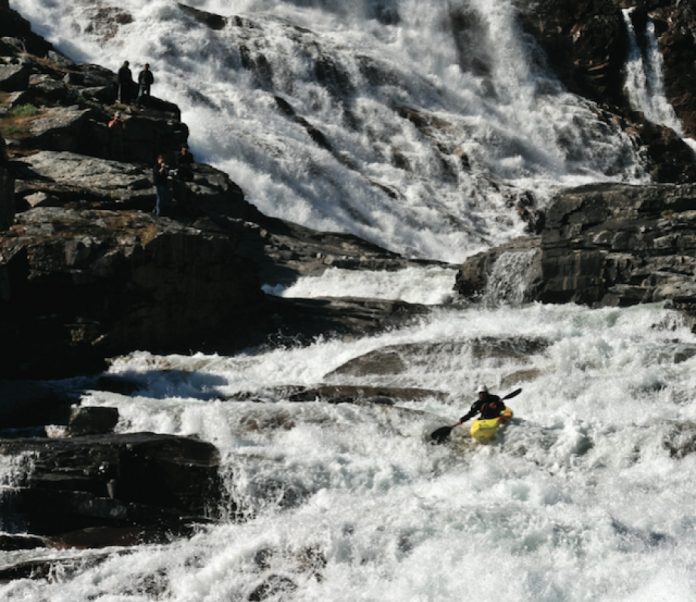
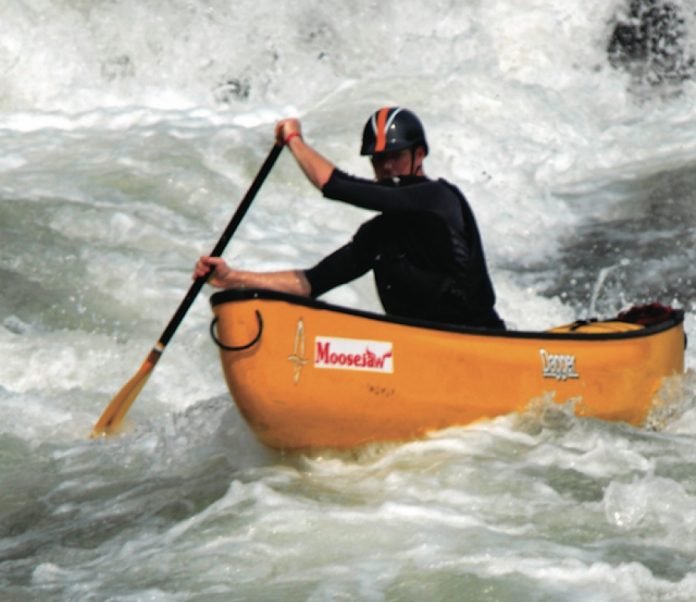
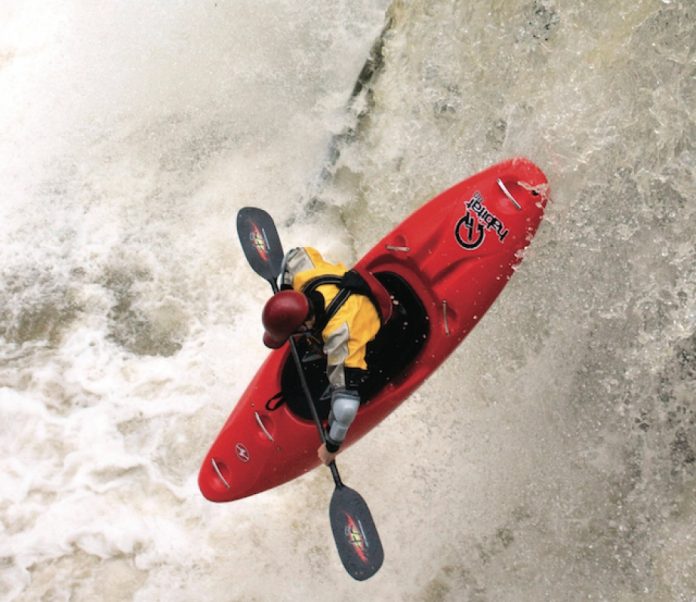
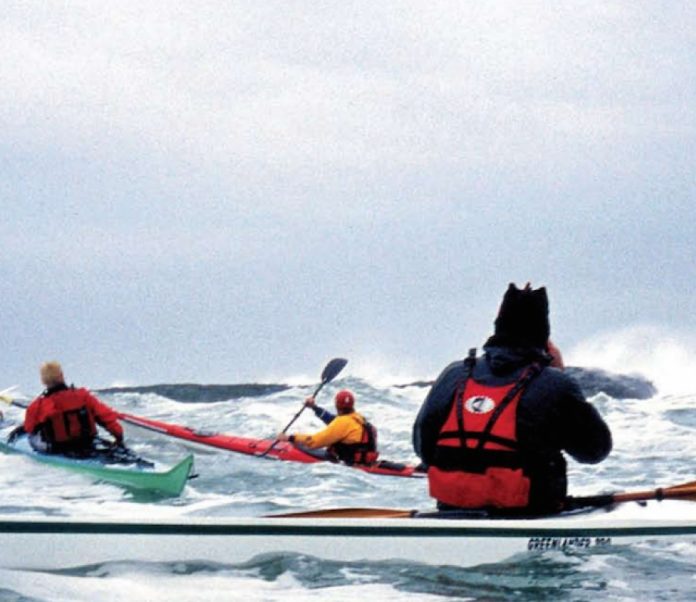
 This article first appeared in the Early Summer 2009 issue of Adventure Kayak Magazine. For more great content, subscribe to Adventure Kayak’s print and digital editions
This article first appeared in the Early Summer 2009 issue of Adventure Kayak Magazine. For more great content, subscribe to Adventure Kayak’s print and digital editions 